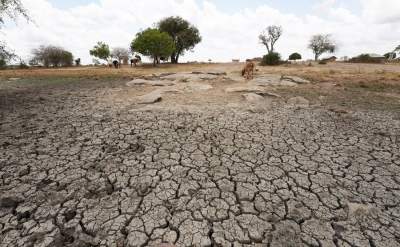New Delhi (IANS) Race to get off Russian gas to boost energy security and cut costs, and the economic opportunities of the clean transition are driving global momentum on climate change for the world’s biggest four emitters –China, the US, the European Union and India, as per a new report on Monday.
The report, The Big Four: Are major emitters downplaying their climate and clean energy progress?, by the Energy and Climate Intelligence Unit (ECIU) suggests that inter-connected global crises, alongside market mechanisms are seeing government and private investment driving the shift to electric vehicles, low-carbon heating and renewable power everywhere, particularly in the ‘big four’ highest emitting national blocs.
Real world trends are driving this momentum, finds the report. These include rapid price reductions, which make wind and solar power now vastly cheaper than fossil fuel alternatives, concerns over energy security and access, and — in Europe — support for Ukraine.
Sales of electric vehicles are also accelerating, with major markets approaching tipping points. Importantly, in three of the four, these forces are strong enough that they may well be on track to outstrip their emissions targets under the Paris Agreement, meaning that the overall picture for keeping warming to 1.5 degrees Celsius may be better than it looks on paper.
Gareth Redmond-King, International Lead at ECIU, said: “The pace at which the green transition is speeding up, particularly in the powerhouses of the global economy, is remarkable. It shows starkly just how the right policy and market frameworks are driving change at a pace which would have been unimaginable just a few years ago.
“Russia’s invasion of Ukraine and the global energy crisis have accelerated this shift still further. And, whilst there might be a short-term uptick in fossil fuel use and more progress will be needed, no-one who genuinely understands the interconnected crises facing the world believes that more oil and gas represent anything more than a very short-term solution.”
On specific country action: China: Installing 165 GW of renewables this year, up 25 per cent on previous year; electric vehicles sales projected to be six million in 2022, double those in 2021.
The US: Second only to China for deployment of solar and wind, with forecasts they could generate 85 per cent of power from renewables by 2030; on electric vehicles, some forecasts of sales suggest they could be half of all new cars bought in 2030.
European Union: New climate and energy targets set with implementing policies to achieve them, in response to Russia’s invasion of Ukraine; cumulative effects set to increase EU’s ambition and solidify policies that will deliver it, although not yet reflected in headline commitments.
India: Rapid rollout of renewable energy, particularly solar, set to transform India’s electricity sector this decade, with coal generation becoming increasingly unprofitable; trends plus others in transport and homes look like putting India on course towards its 2070 net zero emissions target.
Yixiu Wu, programme director of Ecocycle, a Shanghai-based research tank focusing on energy and circle economy, said: “China’s support to renewables has been consistent and also highly adaptable to the evolving situation on the ground. The RE installation keeps running high in China, and the government has been introducing policies to deepen the power market reform, and building a smart grid to transform the power system.
With support for the most vulnerable nations hardest hit by climate change a key focus of the COP27 climate summit, the analysis also highlights how speeding the clean transition everywhere reduces reliance on expensive fossil fuels.
This in turn brings down costs, changes global finance flows, and reduces climate impacts that threaten food supplies. With all countries having enough renewable potential to power themselves, this is a universal route to energy security, it suggests.

